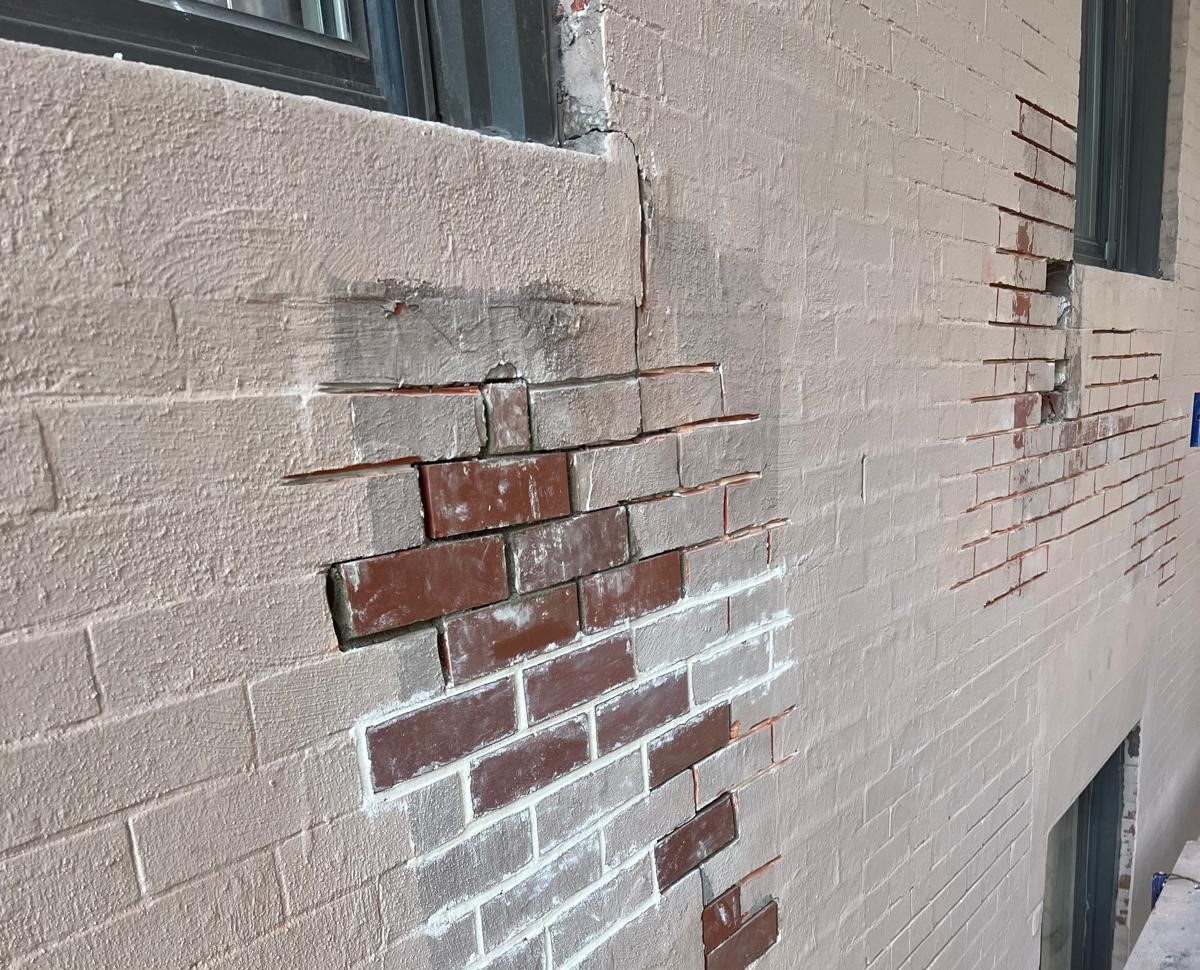Maintaining the structural integrity and aesthetic appeal of your brickwork is essential for any building owner. Two critical techniques in masonry restoration are brick pointing and tuck pointing. These methods, while similar in their goals, differ significantly in their processes and outcomes. Let’s dive into the world of masonry and explore the differences between brick pointing and tuck pointing.
What is Brick Pointing?
Brick pointing, often simply referred to as repointing, involves the removal of damaged or deteriorated mortar from the joints of brickwork and replacing it with new mortar. This process is crucial for maintaining the integrity and appearance of a brick structure.
Process of Brick Pointing
The brick pointing process is meticulous and involves several steps:
1. Preparation:
Cleaning the area to remove dirt and loose mortar.
2. Removing Old Mortar:
Using chisels or grinders to carefully remove the old, damaged mortar without damaging the bricks.
3. Mixing New Mortar:
Preparing a mortar mix that matches the original in composition and color.
4. Applying New Mortar:
Filling the joints with the new mortar using pointing trowels.
5. Finishing:
Smoothing and shaping the mortar joints to match the surrounding brickwork.
Advantages of Brick Pointing
- Longevity: Extends the lifespan of the brickwork by preventing water ingress and subsequent damage.
- Aesthetic Benefits: Enhances the visual appeal by giving the brickwork a fresh, clean look.
- Structural Integrity: Reinforces the strength of the wall, preventing bricks from loosening and falling out.
What is Tuck Pointing?
Tuck pointing is a more specialized form of repointing that involves using two contrasting colors of mortar to create the illusion of perfectly uniform brickwork. This technique is often used on historic buildings to restore their original appearance.
Process of Tuck Pointing
The tuck pointing process is intricate and involves:
1. Preparation:
Cleaning the brickwork and removing old mortar.
2. Applying Base Mortar:
Filling joints with a mortar that matches the color of the bricks.
3. Creating False Joints:
Adding a thin line of contrasting mortar over the base layer to create the appearance of fine, neat joints.
Advantages of Tuck Pointing
- Visual Appeal: Creates a visually striking and precise appearance.
- Historical Preservation: Ideal for restoring historic buildings to their former glory.
- Weather Resistance: Provides an additional layer of protection against weather damage.
Key Differences Between Brick Pointing and Tuck Pointing
- Material Differences: Brick pointing uses one type of mortar, while tuck pointing uses two contrasting mortars.
- Technique Differences: Tuck pointing involves creating false joints for a neater appearance.
- Visual Outcomes: Brick pointing results in a uniform look, while tuck pointing gives a highly detailed and precise finish.
When to Use Brick Pointing
Brick pointing is ideal in situations where the mortar joints are visibly damaged, cracked, or crumbling. Signs that brick pointing is needed include:
- Visible gaps or cracks in the mortar.
- Loose or missing bricks.
- Water leakage through the walls.
When to Use Tuck Pointing
Tuck pointing is best used when aesthetic appeal and historical accuracy are paramount. Signs that tuck pointing is needed include:
- The desire to restore the original look of historic buildings.
- The presence of uneven or unsightly mortar joints.
- A need for a more visually pleasing finish.
Conclusion
Both brick pointing and tuck pointing are essential techniques in masonry restoration, each with its unique benefits and applications. Understanding the differences between the two can help you make an informed decision for maintaining and enhancing your brickwork. Whether you’re preserving a historic façade or repairing a modern wall, choosing the right method ensures the longevity and beauty of your structure.

